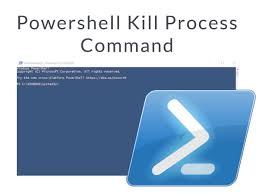Error handling and debugging are essential aspects of PowerShell scripting to ensure the robustness and reliability of your scripts. Here are some techniques you can use for error handling and debugging in PowerShell:
- Error Action Preference: PowerShell allows you to control how it responds to different types of errors using the ErrorActionPreference variable. This variable can have values like “SilentlyContinue”, “Stop”, “Continue”, or “Inquire”. By setting the appropriate value, you can define how your script should handle errors. Example:
$ErrorActionPreference = "Stop"- Try-Catch-Finally: PowerShell provides a try-catch-finally block to handle errors more gracefully. You can enclose the portion of your script that might generate an error within a try block and specify catch blocks to handle specific types of errors. Example:
try {
# Code that might generate an error
}
catch {
# Code to handle the specific error
}
finally {
# Code that always runs, regardless of the error
}- Error variable: PowerShell stores error information in the automatic variable $Error. You can access this variable to get information about the last error that occurred. You can retrieve the error message, details, and other relevant information for debugging or logging purposes. Example:
if ($Error) {
$lastError = $Error[0]
Write-Host "Last error: $($lastError.Exception.Message)"
}- Write-Debug: You can use the Write-Debug cmdlet to output debugging information during script execution. By including Write-Debug statements at various points in your script, you can trace the flow of your script and identify potential issues. Example:
Write-Debug "This is a debug message"To enable debugging, you need to set the $DebugPreference variable to “Continue” or “Inquire” before running the script.
- Verbose Output: You can use the Write-Verbose cmdlet to provide additional information during script execution. By including Write-Verbose statements in your script, you can output detailed information that can help with debugging and troubleshooting. Example:
Write-Verbose "Verbose message: $($variableName)"To see verbose output, you need to either use the -Verbose parameter when executing the script or set the $VerbosePreference variable to “Continue” or “Inquire”.
Error handling and debugging are essential aspects of PowerShell scripting to ensure that scripts run smoothly and to troubleshoot any issues that arise during execution. Let’s explore error handling and debugging techniques in PowerShell scripting.
Error Handling:
PowerShell provides several constructs for error handling in scripts, allowing you to gracefully handle errors and take appropriate actions. Some key constructs are:
try-catch-finally: This construct is used to catch and handle specific types of exceptions that may occur during script execution. You can place the code that might generate an exception inside the try block and specify the type of exception to catch in the catch block. The finally block is optional and is executed regardless of whether an exception occurred or not.
try {
# Code that might generate an exception
}
catch {
# Exception handling code
}
finally {
# Cleanup code
}
throw: You can use the throw statement to intentionally generate an exception at any point in your script. This can be useful for custom error handling scenarios.
if ($condition) {
throw “An error occurred.”
}
ErrorAction: The ErrorAction parameter can be used with cmdlets and functions to control the action taken when an error occurs. It allows you to specify whether to continue executing the script, stop the script, or perform a specific action when an error occurs.
Get-Process -ErrorAction Stop
ErrorVariable: The ErrorVariable parameter allows you to capture error messages and store them in a variable for further analysis or reporting.
$errors = @()
Get-Process -ErrorVariable errors
Debugging Techniques:
PowerShell provides various techniques to aid in debugging scripts and identifying issues. Some useful techniques are:
Write-Host or Write-Output: You can use these cmdlets to display intermediate values or messages during script execution. These can help you track the progress of your script and identify potential issues.
Write-Host “This is a debug message.”
Set-PSBreakpoint: This cmdlet allows you to set breakpoints in your script, suspending the script’s execution at a specified line. You can then inspect variables and step through the code to identify problems.
Set-PSBreakpoint -Script .\script.ps1 -Line 10
Write-Debug: Placing Write-Debug statements at critical points in your script can help you enable or disable debugging messages during script execution. You can enable debugging by running the script with the -Debug parameter.
Write-Debug “Debug message.”
PowerShell Integrated Scripting Environment (ISE): If you are using the PowerShell ISE, you can utilize features like breakpoints, variable inspection, and step-by-step execution using the built-in debugging capabilities.
Verbose Output: You can use the -Verbose parameter with cmdlets and functions to display additional information during script execution. This can be helpful for understanding the flow and identifying potential issues.
Write-Verbose “Verbose message.”
Error Action Preference: You can temporarily adjust the error action preference to Stop to halt the script immediately when an error occurs. This can help narrow down the source of the issue.
$ErrorActionPreference = “Stop”
By using these error handling and debugging techniques, you can effectively handle errors, troubleshoot issues, and ensure the smooth execution of your PowerShell scripts.
These techniques can help you handle errors effectively and debug your PowerShell scripts. By implementing proper error handling and using debugging techniques, you can identify issues and resolve them more efficiently.
